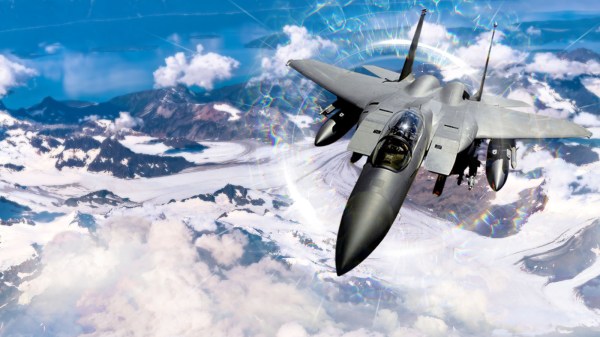F-16 electronic self-protection system completes government lab integration

A jamming system that will provide F-16 fighter jets increased protection against modern electronic threats recently completed government lab integration, setting the stage for the first flight test next year, according to the manufacturer.
That system, the AN/ALQ-257 Integrated Viper Electronic Warfare Suite (IVEWS) made by Northrop Grumman, provides digital radar warning receiver performance and active jamming capability in an internal suite to keep the F-16 operationally viable beyond 2046, according to fiscal 2024 Air Force budget documents. It can detect, identify, locate and jam potential threats.
“We’ve just completed our system integration in a U.S. government laboratory. This is a huge accomplishment to get it into the U.S. government’s labs, and actually integrate the system with all of the other systems that it will be on their F-16 platform,” James Conroy, vice president of the navigation, targeting and survivability business at Northrop Grumman, told DefenseScoop in an interview.
The testing took place in November.
“We see this as a huge success and it’s really going to take and mitigate any of the challenges when we actually get on the first aircraft,” he said.
While the system has flown on Northrop-made systems, it has not taken its initial flight test on a military jet. Conroy noted that this lab test positions IVEWS well for the maiden flight test in first quarter of next year, and the company is on track to meet that milestone.
The lab environment represents the aircraft and has all of the different subsystems that IVEWS needs to be talking and interacting with.
Self-protection systems have grown in importance in recent years due to the change in the threat environment and the sophistication adversaries are demonstrating within the electromagnetic spectrum to jam GPS navigation, communications and even munitions.
In the past, many of the adversary radars and jammers were in fixed locations, Conroy said. However, today, U.S. forces don’t know where they all are as the enemy will turn them on and off sporadically.
“This is really requiring is that all platforms really need to have that RF electronic warfare suite on it that can detect, ID, track and jam the threat radars,” Conroy said.
This differs from electronic attack aircraft that are operating from farther away and are jamming known threats to allow other aircraft to penetrate enemy defenses, he added. But, if the threats aren’t known, regular aircraft can run into trouble if they don’t have self-defense capabilities, meaning most platforms must have some electronic warfare capacity.
Systems like IVEWS help keep aging airframes that the military desires to continue flying, survivable against modern threats.
What makes IVEWS more capable, Conroy said, is that it can be used in conjunction with other electronic warfare and radar capabilities on board the aircraft — what he referred to as digital interoperability.
Often times, EW systems and radars can’t operate at the same time or they drown each other out in looking at similar parts of the electromagnetic spectrum.
“Digital interoperability makes sure that the two systems — the radar system, the APG-83 SABR, as well as the ALQ-257 IVEWS — can share the same part of the electronic spectrum. We do this by digital pulse-by-pulse interoperability, where both systems are looking at the same part of spectrum simultaneously and they just really know what they’re doing in their part of electromagnetic spectrum so we’re not conflicting with each other, we’re not reducing each other’s capabilities,” Conroy said. “If you’re turning off your radar so that you can be survivable, then you can’t take in sometimes to your primary mission. Similarly, if you have to turn off your RF electronic warfare suite because you need to take in and use your radar, that’s also not acceptable to us.”
Conroy also announced that a second international customer has selected IVEWS for their aircraft. Northrop declined to name the international partners using the system due to sensitivities.
Having allies using IVEWS along with the Air Force enables greater interoperability during operations.
“I believe that absolutely critical for our partners to have complementary systems. And the reason being is we go and we will take in and prosecute or execute operations in a coalition fashion,” he said. “Making sure that everyone in the coalition has those capabilities is absolutely, I think, critical to make sure that all of the platforms are survivable to ensure that they can actually execute their mission successfully.”






